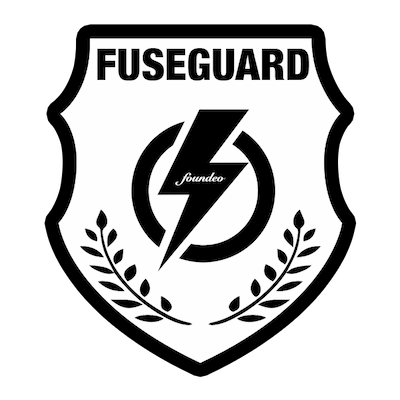Getting the Application Root Path in ColdFusion
Published on April 09, 2007
By Pete Freitag
By Pete Freitag
I wrote a handy function today that will return the server file system path of the acting Application.cfm file for a ColdFusion application. It works by working its way up the directory tree until it finds an Application.cfm file. If it doesn't find one it will throw an exception.
<cffunction name="getApplicationRootPath" returntype="string" hint="Returns the root path of the acting Application.cfm file." output="false" access="public">
<cfargument name="base_path" default="./" hint="Normally you want to leave this as default" required="false">
<cfset var actual_path = ExpandPath(arguments.base_path)>
<cfif FileExists(ExpandPath(arguments.base_path & "Application.cfm"))>
<cfreturn actual_path>
<cfelseif REFind(".*[/\\].*[/\\].*", actual_path)>
<cfreturn getApplicationRootPath("../#arguments.base_path#")>
<cfelse>
<!--- we have reached the root dir, so throw an error not found --->
<cfthrow message="Unable to determine Application Root Path" detail="#actual_path#">
</cfif>
</cffunction>
It probably could be optimized a bit more, but it does the trick for me.
Getting the Application Root Path in ColdFusion was first published on April 09, 2007.
If you like reading about application.file, expandpath, cfml, or coldfusion then you might also like:
- Top 10 Underrated Functions in ColdFusion
- URL Safe Base64 Encoding / Decoding in CFML
- Using Hashicorp Vault with ColdFusion
- CFML Left and Right Functions can Accept Negative Counts
The FuseGuard Web Application Firewall for ColdFusion & CFML is a high performance, customizable engine that blocks various attacks against your ColdFusion applications.
CFBreak
The weekly newsletter for the CFML Community
Comments
Send to cflib?
by Raymond Camden on 04/09/2007 at 3:19:42 PM UTC
Awesome! Thanks! Where were you a few months ago when I really needed one of these?! Just kidding, thanks for sharing.
by Boyan on 04/09/2007 at 6:03:58 PM UTC
Pete, nifty little function, thanks, it just saved me some time.
by Rob Munn on 02/20/2008 at 2:32:44 PM UTC
alternately you could put this in the application file itself
<cfset request.appPath = GetCurrentTemplatePath()>
That will give you a request var with the same info in it (server path to the application)
<cfset request.appPath = GetCurrentTemplatePath()>
That will give you a request var with the same info in it (server path to the application)
by Chris on 12/26/2008 at 5:04:53 PM UTC
I know this is an old post, but I modified the script so that I could add it to the CustomTag directory and identify a shared IIS virtual directory on my server that exists outside of the application root. The technique for going down a sub-directory (../) wasn't working as I was using a full path.
I used the "ListReverse" UDF to safely identify and drop the current sub-directory.
http://cflib.org/udf/ListReverse
Here's the code:
<cffunction name="getScriptsGlobalRootPath" returntype="string" hint="Returns the root path of the shared virtual script directory." output="false" access="public">
<cfargument name="base_path" default="#GetDirectoryFromPath(getBaseTemplatePath())#" hint="Normally you want to leave this as default" required="false">
<cfset var actual_path = arguments.base_path>
<cfif DirectoryExists(arguments.base_path & "_globalScripts")>
<cfreturn actual_path & "_globalScripts">
<cfelseif listlen(actual_path,":") GT 1>
<CFSET arguments.base_path = Request.ListReverse(ListRest(Request.ListReverse(arguments.base_path, "\"),"\"),"\") & "\">
<cfreturn getScriptsGlobalRootPath(arguments.base_path)>
<cfelse>
<!--- we have reached the root dir, so throw an error not found --->
<cfthrow message="Unable to determine the shared virtual script directory" detail="#actual_path#">
</cfif>
</cffunction>
I used the "ListReverse" UDF to safely identify and drop the current sub-directory.
http://cflib.org/udf/ListReverse
Here's the code:
<cffunction name="getScriptsGlobalRootPath" returntype="string" hint="Returns the root path of the shared virtual script directory." output="false" access="public">
<cfargument name="base_path" default="#GetDirectoryFromPath(getBaseTemplatePath())#" hint="Normally you want to leave this as default" required="false">
<cfset var actual_path = arguments.base_path>
<cfif DirectoryExists(arguments.base_path & "_globalScripts")>
<cfreturn actual_path & "_globalScripts">
<cfelseif listlen(actual_path,":") GT 1>
<CFSET arguments.base_path = Request.ListReverse(ListRest(Request.ListReverse(arguments.base_path, "\"),"\"),"\") & "\">
<cfreturn getScriptsGlobalRootPath(arguments.base_path)>
<cfelse>
<!--- we have reached the root dir, so throw an error not found --->
<cfthrow message="Unable to determine the shared virtual script directory" detail="#actual_path#">
</cfif>
</cffunction>
by James Moberg on 05/11/2010 at 2:27:57 PM UTC
 Pete Freitag
Pete Freitag